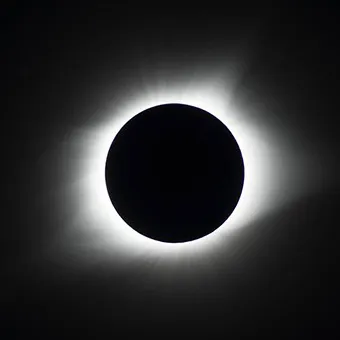A total solar eclipse found its path of totality over Ontario during the afternoon of April 8, 2024. Thousands watched as the sun was covered by the moon due to the alignment of the two celestial bodies.
The eclipse reached 100% totality, meaning the moon completely covered the face of the sun as it traversed over the Niagara Region. The total solar eclipse on April 8, 2024 was the first to cover the province of Ontario since 1979. Some were left in disappointment after the cloudy weather in southern Ontario put a damper on the viewing of the eclipse. Those seeing it for the first time, however, were pleasantly surprised by the effect that the spectacle had on the sky. The street lights were turned on by the darkness that came with the total eclipse. After viewing the eclipse, many questioned what a solar eclipse really is.
A total solar eclipse is an occurrence that happens when the Moon travels between the Sun and the Earth. This blocks out the sunlight and projects the Moon’s shadow onto our planet. Solar eclipses generally occur approximately two to five times a year, but a total solar eclipse typically happens once every 18 months. The eclipse can sometimes last for about three and a half minutes, but the total solar eclipse seen in Ontario lasted for seven and a half minutes.
A week prior to the celestial event, the Niagara Region had declared a state of emergency, as one million people were expected to be present for the solar eclipse. Compared to other parts in Ontario like Niagara, Toronto saw 99.9% of eclipse coverage rather than the 100% seen in Niagara. However, the weather spoiled the experience as it was cloudy throughout the day in most of southern Ontario, including Niagara.
The eclipse began over the southern Pacific Ocean, then carried out to Mexico, the United States, and finally Canada. In Canada, the southwestern region of Ontario was the first to witness the eclipse, and the last was Newfoundland. The occurrence lasted for about 30 minutes throughout Canada. The parts of Canada where the moon blocked the sun completely included; southern Ontario and Quebec, parts of New Brunswick, P.E.I., the northernmost point of Nova Scotia and Newfoundland.
While sharing photos of the Eclipse, a PDSB student remarked while discussing societal issues with his fellow colleagues, “The clash between the sun and the moon on April 8th was one of the best sights I’ve seen so far. I was disappointed because of the weather and regret not going to an atmosphere where I could’ve seen the total eclipse.” The next total solar eclipse to pass over the province is scheduled to occur in the year 2099.








